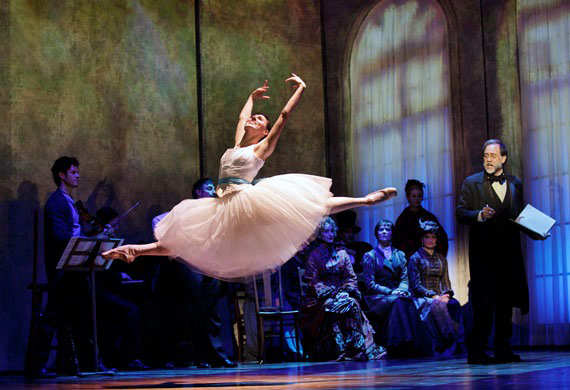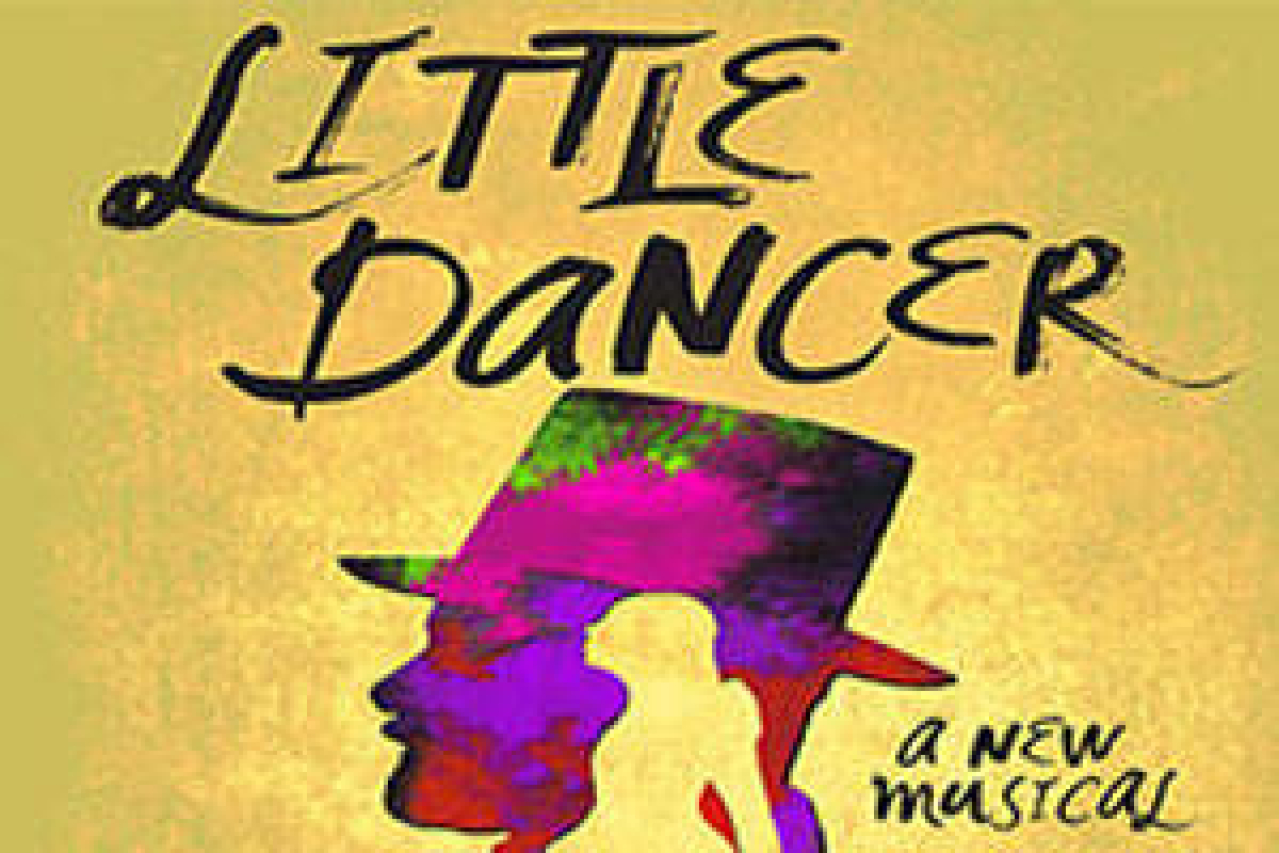Little Dancer

(© Paul Kolnik)
Well-documented history is a malleable stage material. An unfinished story, however, is subject to the transcendent possibilities of imagination. The Tony-winning creative team behind Little Dancer, whose unfinished story has reached the realms of artistic mythology, has only just begun to scratch the surface of these possibilities. Still, as it closes out its world premiere run at Washington, D.C.'s Kennedy Center, its sporadically chill-inducing moments suggest that perhaps heaven isn’t too far away.
The original musical, which dramatizes the enigmatic life of ballerina Marie van Goethem — the model behind Edgar Degas' famously controversial sculpture La Petite Danseuse de Quatorze Ans — finds itself a top-notch incubation tube. Director/choreographer Susan Stroman joins forces with songwriting partners Stephen Flaherty (music) and Lynn Ahrens (book and lyrics) to bring wholesome life to the budding relationship between van Goethem (New York City Ballet Principal Tiler Peck), a blossoming young dancer with a fighting spirit, and Degas (four-time Tony winner Boyd Gaines), a surly old artist with only a handful of days left in his prestigious career.
The subject matter itself opens the piece to an unusual breadth of artistic mediums, many of which the creative team capitalizes on to stunning effect. Beowulf Boritt's Degas-inspired set, painted in the artist's signature Impressionistic style, places us in a pastel dreamscape, meant to house compelling portraits of its characters rather than merely a historical re-creation of 19th-century Paris. William Ivey Long similarly captures Degas' colors and textures in his elegant costumes for dancers and non-dancers alike. Classical melodies also make their way into Flaherty's contemporary score, whose balletic opening number, "C'est le Ballet," achieves a combination of nuanced storytelling and melodic brightness not seen in an Ahrens and Flaherty musical since their Tony-winning Ragtime.
Rebecca Luker, with her perpetually flawless soprano, leads the sweeping number as older Marie van Goethem, who, upon hearing of Degas' death, comes to his studio to find the sculpture that irreversibly changed the course of her life and career as a dancer. The introductory vignette launches what becomes a prolonged flashback in which Luker is sadly underutilized, frustratingly cordoned off as a strictly passive narrator. Nonetheless, she lends her soaring voice when needed while her younger counterpart tackles the dancing in the show's clear division of performance responsibilities. There is no hiding that for Peck singing and acting are unsettled territories. Nevertheless, in the moments the dancer is not wowing audiences with her world-class technique, Stroman has drawn a winning spunk out of the young performer, whose insolent rapport with Gaines' Degas is infinitely charming.
Degas and young Marie first cross paths during one of her rehearsals with the Paris Opera Ballet — where he can frequently be found sketching the dancers. Daughter to a poor, drunken laundress (a biting performance by Karen Ziemba), Marie steals to subsidize her ballet income in order to support her mother and younger sister, Charlotte (the sweet-voiced Sophia Anne Caruso). Degas becomes her next unsuspecting victim, though he soon apprehends his pickpocket and sentences her to indentured servitude as a model, a job she must balance with her demanding schedule at the ballet — a place she sees as the key to her freedom from the Paris slums.
For Degas, however, Marie is the key to a new, unexplored realm of honest artistic expression, at which he frantically grasps before losing his eyesight for good. Gaines delivers his usual brilliant performance, capturing the artist's desperation while explicating his enthrallment with the headstrong muse in the beautifully transformative song "In Between." The relationship, however, is given an all too easy pass as one of the innocent Annie-Daddy Warbucks nature, despite the prevalence of examples to the contrary among the "rats" (as they're affectionately called) and the wealthy Johns of gay Paris.
The sculpture from which the musical has taken its name is the final product of this profound relationship, which resulted in scathing remarks from critics and Marie's dismissal from the ballet. The historical details surrounding the end of van Goethem's ballet career are still obscure, as are the details of the life she led after leaving the Paris Opera. The creative team, consequently, has ample opportunity to dream up its own history, a luxury that seems to have become more of a burden as the piece becomes weighed down by an influx of neglected characters. The captivating Kyle Harris makes the most of his role as Christian, Marie's violin-playing beau. Jenny Powers' brief appearance as Marie's older sister, Antoinette, also takes the show down an unnecessarily extended detour, ending with a scene of debauchery whose consequences on the rest of the show's development remain unclear.
Yet, despite its flaws, Little Dancer is a refreshing rejuvenation for all three of the piece's primary creators. Ahrens and Flaherty have clearly returned to their wheelhouse following their less-than-rapturous score for last season's Rocky, while Stroman, who recently directed the short-lived adaptation of Bullets Over Broadway, proves that there are great depths of artistry beneath the brassy song-and-dance routines on which she has planted her flag. The extended dream ballet she choreographs for Peck in Act 2, where a distraught Marie searches for a new path without the Paris Opera, is the performance's most exquisite moment, conjuring images of similar vignettes made famous by classic musicals like Carousel. You can often see the strings of the traditional musical-theater format tethering the show to the ground. But if its final moments are any indication, Little Dancer, like the work that inspired it, has the potential to break new artistic ground.











